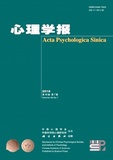Judgments of learning (JOLs) are characterized as metacognitive judgments on the likelihood that studied items can be successfully retrieved in a future memory test. Previous studies found that people employ different types of cues to inform their online JOLs. Some of these cues can guide JOLs to accurately reflect memory status but others cannot (and are even misleading in some situations). A widely studied cue for JOL formation is subjective processing experience (e.g., perceptual fluency) while completing a given task, which often confers metacognitive illusions. It has been found that people give higher JOLs to large than to small words, although font size has minimal influence on retention, a phenomenon termed the font size effect on JOLs. A potential mechanism underlying the effect is perceptual fluency: Large words are perceived more fluently than small ones, and fluent processing experience of large words induces a feeling of knowing, which drives people to offer higher JOLs. The font size effect is important because it spotlights a dissociation between metacognitive judgments and memory itself. The current study aims to explore the influences of encoding strength on the font size effect, and to explore practical techniques to calibrate metacognitive illusions induced by perceptual fluency.
Experiment 1 aimed to delineate the role of perceptual fluency in the font size effect. Twenty-six participants first completed a continuous identification (CID) task to measure the difference in perceptual fluency (indexed by response times; RTs) between large (70-pt) and small (9-pt) words, after which they attended a classic learning task. In the learning task, participants studied large and small words one-by-one, for 2 s each, and made item-by-item JOLs. Immediately following the learning task, they completed a distractor task, followed by a free recall test. The results showed that, in the CID task, participants responded much faster to large than to small words, indicating the natural difference in perceptual fluency between large and small words. In addition, perceptual fluency (i.e., RTs in the CID task) significantly correlated with JOLs, reflecting the fluency effect on JOLs. More importantly, perceptual fluency significantly mediated the font size effect on JOLs, supporting the claim that perceptual fluency is responsible for the font size effect.
Experiment 2 manipulated study durations to investigate the influence of enhancing encoding strength (through prolonging study duration) on the font size effect. Specifically, three groups of participants studied each word for 2 s, 4 s, and 8 s, respectively, and made item-by-item JOLs. The results demonstrated that prolonging study duration correspondingly decreased the font size effect on JOLs. It is, however, worth highlighting that expanding study time cannot fully eliminate the font size effect because the results still showed a significant font size effect even when the study time was increased to 8 s.
Experiment 3 was conducted to further investigate the effectiveness of enhancing encoding strength for calibration of the font size effect. A sentence-making group was instructed to encode each word by generating a sentence to deepen the level of processing (i.e., encoding strength). By contrast, there were no explicit requirements of encoding strategies in the control group (i.e., participants in the control group could use any strategies they liked). In the control group, the classic font size effect on JOLs was successfully replicated; of critical interest, the effect disappeared in the sentence-making group. Such results reflect the power of improving encoding strength to calibrate metacognitive illusions induced by perceptual features.
In summary, the current study establishes that perceptual fluency is at least one of the mechanisms underlying the font size effect on JOLs; prolonging study duration reduces but fails to eliminate the font size effect on JOLs; more importantly, directly deepening the level of processing through sentence-making is a valid strategy to calibrate metacognitive illusions induced by perceptual features. Theoretical and practical implications are discussed in the main text.




